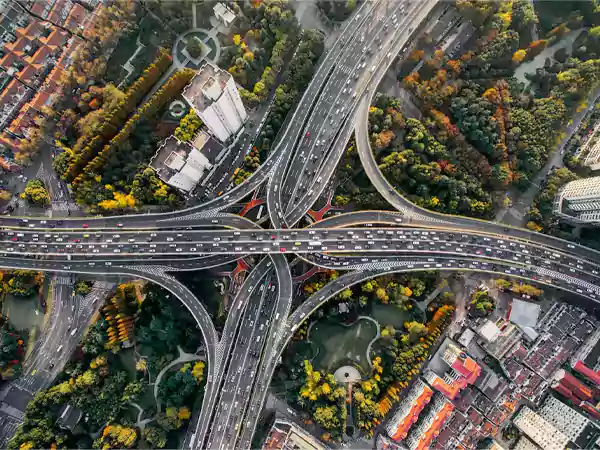Virginia News: Continuous Flow Intersection and the 2014 Hummer

Virginia news continuous flow intersection 2014 Hummer has captured the attention of both residents and traffic experts alike as urban areas struggle with increasing congestion. Continuous flow intersections (CFIs) are being introduced across Virginia as a forward-thinking solution to manage traffic more efficiently. This article delves into the mechanics of CFIs, the specific incident involving a 2014 Hummer, and the broader implications for traffic safety and urban planning in Virginia.
Short Summary of Continuous Flow Intersection and the 2014 Hummer
| Aspect | Details |
|---|---|
| Topic | Virginia News: Continuous Flow Intersection and the 2014 Hummer |
| What are CFIs? | Continuous flow intersections that allow left turns without stopping at signals. |
| Benefits | – Improved Traffic Flow: Reduces delays by up to 40% – Reduced Accident Rates: 50% reduction in severe accidents – Accommodates Larger Vehicles: Effective for SUVs and trucks – Environmental Benefits: Lower emissions from reduced idle times – Cost-Effectiveness: Long-term savings from fewer accidents and maintenance needs |
| Challenges | – Driver Education: Need for awareness of CFI operations – Signage and Visibility: Importance of clear signs for navigation – Community Resistance: Addressing local concerns about changes |
| Case Studies | Examples from Arizona and Texas demonstrating successful CFI implementations |
| Technology Role | Integration of smart traffic signals and data analytics to optimize traffic management |
| Conclusion | CFIs have significant potential to improve traffic conditions and safety in Virginia. |
Key Takeaways of Continuous Flow Intersection and the 2014 Hummer
- Enhanced Traffic Efficiency: CFIs can reduce delays by up to 40%, allowing for smoother traffic flow.
- Safety Improvements: The design reduces conflict points, leading to a significant decrease in severe accidents.
- Accommodates All Vehicle Types: CFIs effectively serve both compact cars and larger vehicles like SUVs and trucks.
- Technological Integration: Smart traffic signals and data analytics can further optimize the performance of CFIs.
- Community Involvement: Successful implementation requires driver education and addressing community concerns to build confidence in new traffic systems.
Understanding Continuous Flow Intersections

Continuous flow intersections are a revolutionary design that allows vehicles to make left turns without stopping at a traffic signal. This design separates left-turning traffic from oncoming traffic by moving it to the left side of the intersection, where it can merge with opposing traffic. By eliminating the need for vehicles to wait for a green light to turn left, CFIs significantly improve traffic flow.
Virginia has seen a rise in traffic congestion, particularly in urban centers like Richmond, Norfolk, and Arlington. As the population grows, the demand for efficient transportation systems increases. The Virginia Department of Transportation (VDOT) has been researching CFIs extensively, highlighting their potential to reduce delays and improve overall traffic conditions.
In the context of the Virginia news continuous flow intersection 2014 Hummer, recent studies show that CFIs not only enhance vehicle flow but also improve safety. By reducing the number of conflict points—areas where vehicles might collide—CFIs contribute to lower accident rates. This innovative design is particularly beneficial in high-traffic areas where traditional intersections struggle to accommodate the volume of vehicles.
Also Read: Exploring Сараховый Район Бургас: A Hidden Gem on Bulgaria’s Coast
The 2014 Hummer Incident
In early 2023, a significant incident involving a 2014 Hummer at a newly constructed continuous flow intersection made headlines in Virginia news. The Hummer, known for its large size and unique driving dynamics, navigated the intersection with surprising ease. Eyewitnesses described how the vehicle was able to move through the intersection without hesitation, a testament to the design’s effectiveness even for larger vehicles.
This incident became a focal point for discussions around the practicality of CFIs for all types of vehicles. Many drivers of larger vehicles, such as SUVs and trucks, often express concerns about navigating complex intersections. However, the 2014 Hummer’s smooth transit through the continuous flow intersection provided valuable insights for city planners and traffic engineers.
The Virginia news surrounding this event sparked a series of conversations about driver behavior and awareness at CFIs. It highlighted the need for education around these new intersection designs, especially for drivers who may be unfamiliar with their operation. The successful navigation of the Hummer was a positive indicator, but it also raised questions about how to ensure that all drivers feel confident using CFIs.
Interesting Facts about Continuous Flow Intersections
- Traffic Delay Reduction: Continuous flow intersections can reduce delay times by up to 40%, making them a game-changer in urban traffic management.
- Safety Improvement: Larger vehicles like the Hummer often account for a higher percentage of accidents at traditional intersections. CFIs allow for smoother navigation, showcasing significant design benefits.
- Accident Reduction: Studies have shown that CFIs can lead to a 50% reduction in severe accidents, enhancing road safety for all users.
- Efficiency for All Vehicle Sizes: Continuous flow intersections effectively accommodate not just compact cars but also larger SUVs and trucks, addressing concerns for various drivers.
Benefits of Continuous Flow Intersections
The implementation of continuous flow intersections comes with several notable benefits.
- Improved Traffic Flow: One of the primary advantages of CFIs is the significant reduction in waiting times. Traditional intersections often lead to long queues of vehicles waiting for a green light. In contrast, CFIs allow for a continuous flow of traffic, which can decrease overall travel times.
- Reduced Accident Rates: The design of CFIs minimizes the potential for collisions by reducing conflict points. Fewer conflicts mean lower accident rates, which is crucial for enhancing road safety. This is especially relevant in light of the incident involving the 2014 Hummer, which serves as a real-world example of how CFIs can effectively accommodate various vehicle types.
- Accommodating Larger Vehicles: Many urban designs often overlook the challenges faced by larger vehicles. The success of the 2014 Hummer navigating a CFI suggests that these intersections can effectively serve not only compact cars but also larger SUVs and trucks. This adaptability is essential as vehicle sizes continue to evolve.
- Environmental Benefits: By reducing idle times at intersections, CFIs can also contribute to lower emissions. When vehicles spend less time stopped at lights, it reduces fuel consumption and greenhouse gas emissions, aligning with broader environmental goals.
- Cost-Effectiveness: Although the initial construction of CFIs may involve higher upfront costs compared to traditional intersections, the long-term savings from reduced accidents, lower maintenance needs, and improved traffic flow can outweigh these initial expenditures.
Latest Article: https://me-encantas.com/2021/05/18/5-consejos-para-hacer-el-mejor-pan | 5 Tips for Making the Best Bread
Challenges and Considerations
Despite the numerous advantages of continuous flow intersections, there are challenges that must be addressed to ensure their successful implementation.
- Driver Education: One of the primary challenges with CFIs is that many drivers may be unfamiliar with their operation. The unique design requires a shift in driving behavior, and without proper education, drivers may find these intersections confusing. The incident with the 2014 Hummer underlines the importance of public awareness campaigns to educate drivers on how to navigate CFIs safely.
- Signage and Visibility: Clear signage is crucial in helping drivers understand how to approach and navigate continuous flow intersections. Properly placed signs can guide drivers through the unique turning patterns and ensure they are aware of upcoming changes. The visibility of signage, especially for larger vehicles like the 2014 Hummer, must be considered in the design process.
- Community Resistance: As with any new infrastructure project, there may be resistance from local communities. Some residents may be apprehensive about the changes to their familiar roadways. Engaging with the community and addressing their concerns is vital for the successful adoption of CFIs.
- Maintenance and Upkeep: While CFIs can reduce maintenance needs in the long run, the initial installation and ongoing upkeep require careful planning and resources. Regular maintenance is essential to ensure that traffic signals and signage remain clear and functional.
Case Studies and Examples
To further understand the impact of continuous flow intersections, we can look at successful implementations in various cities across the United States. For instance, several CFIs have been constructed in places like Arizona and Texas, with traffic engineers reporting substantial improvements in traffic flow and safety.
In Arizona, the introduction of CFIs at key intersections has led to a decrease in traffic-related injuries and fatalities. The state has conducted extensive research on CFIs and continues to promote their adoption as part of a broader traffic management strategy.
Similarly, in Texas, the implementation of CFIs has been met with positive feedback from both drivers and city planners. The successful navigation of larger vehicles, much like the 2014 Hummer in Virginia news, has reassured residents about the practicality of these intersections.
These case studies demonstrate that CFIs can be a transformative solution for traffic management, particularly in urban environments.
The Role of Technology in Traffic Management
Advancements in technology are playing a crucial role in enhancing the effectiveness of continuous flow intersections. Smart traffic signals and real-time monitoring systems can optimize traffic flow by adjusting signal timings based on current traffic conditions.
Smart Traffic Signals
Smart traffic signals can collect data on vehicle volume and speed, allowing them to adapt in real time. This technology can complement the benefits of CFIs, ensuring that traffic moves as efficiently as possible. Implementing such systems in Virginia could further improve the outcomes seen in the incident involving the 2014 Hummer.
Data-Driven Decision Making
Data analytics is becoming increasingly important in urban planning. By analyzing traffic patterns, city planners can make informed decisions about where to implement CFIs and how to design them for maximum effectiveness. This data-driven approach can help address the challenges identified earlier, such as driver education and community acceptance.
Best for Read: Tsumino-Blog.com News, Manga Updates, Curated Collections —All You Need to Know
The Future of Traffic Management in Virginia
As Virginia continues to face challenges related to traffic congestion, the future of traffic management looks promising with the potential expansion of continuous flow intersections. The recent incident involving the 2014 Hummer serves as a pivotal moment, showcasing the adaptability of CFIs for all types of vehicles.
Infrastructure Investments
To realize the full benefits of CFIs, Virginia must commit to investing in its transportation infrastructure. This includes not only building new CFIs but also retrofitting existing intersections to improve traffic flow. Such investments can have long-term economic benefits by reducing congestion and improving overall mobility.
Policy and Planning
Effective policies and planning frameworks will be essential for the successful integration of continuous flow intersections into Virginia’s transportation landscape. Policymakers must consider factors such as funding, community engagement, and technological advancements to ensure a holistic approach to traffic management.
Conclusion
In summary, Virginia news continuous flow intersection 2014 Hummer underscores the significant potential of continuous flow intersections to tackle urban traffic issues. These innovative designs improve traffic flow, enhance safety, and accommodate various vehicle types, making them a viable solution for Virginia’s growing congestion challenges. The successful navigation of the 2014 Hummer serves as a practical example of their effectiveness.
For continuous flow intersections to succeed, ongoing community engagement, driver education, and strategic planning will be essential. As Virginia embraces these advancements, the state is poised to create a safer, more efficient transportation network for all residents.
FAQ Section
Ans: A continuous flow intersection (CFI) is a type of intersection design that allows vehicles to make left turns without stopping at a traffic signal. This design improves traffic flow and reduces delays.
Ans: The 2014 Hummer successfully navigated the CFI, demonstrating the intersection’s effectiveness for larger vehicles, which sparked discussions about driver awareness and education.
Ans: CFIs improve traffic flow, reduce accident rates, accommodate larger vehicles, lower emissions, and are cost-effective in the long run.
Ans: Challenges include the need for driver education, clear signage, potential community resistance, and ongoing maintenance.
Ans: Smart traffic signals and data analytics can optimize traffic flow at CFIs by adapting to real-time conditions, improving safety and efficiency.
- Short Summary of Continuous Flow Intersection and the 2014 Hummer
- Key Takeaways of Continuous Flow Intersection and the 2014 Hummer
- Understanding Continuous Flow Intersections
- The 2014 Hummer Incident
- Benefits of Continuous Flow Intersections
- Challenges and Considerations
- Case Studies and Examples
- The Role of Technology in Traffic Management
- The Future of Traffic Management in Virginia
- Conclusion
- FAQ Section









